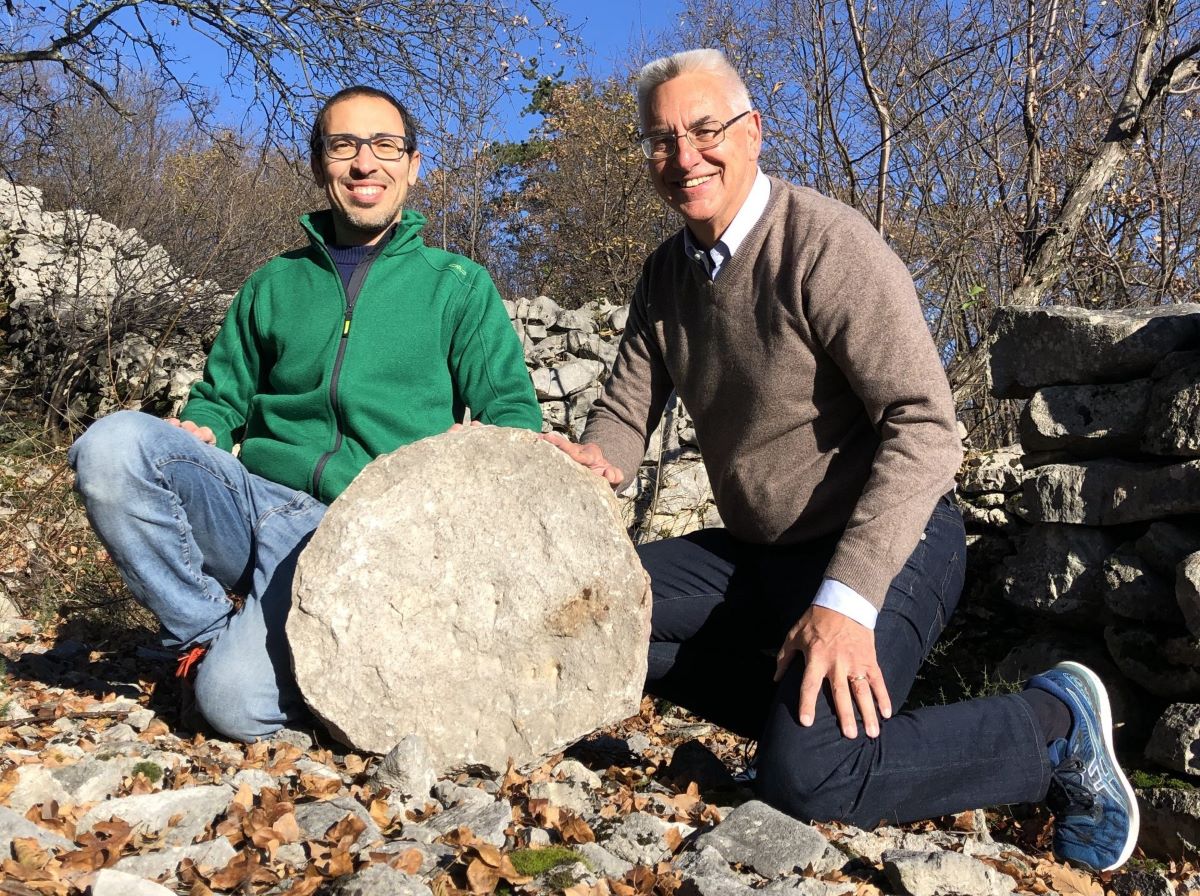
An unusual stone disk, discovered in Italy and dated to around three thousand years ago, may be an ancient map of the brightest stars in the night sky. This would include the Pleiades, the seven sister-nymphs of Greek mythology, according to a new study.
The stone disk, which is about the size of a car tire, was unearthed a few years ago near the hill fort of Rupinpiccolo Protohistoric in northeastern Italy. It is etched with twenty-nine “mysterious” chisel marks, according to researchers who conducted the study.
One side of the stone displays five of the marks, while the other contains twenty-four. Archaeologist Federico Bernardini and astronomer Paolo Molaro of Italy’s National Institute for Astrophysics claim that the twenty-nine marks on the stone were likely made by the same person with a chisel.
🌞 Due grosse pietre circolari presso il Castelliere di Rupinpiccolo, Trieste, hanno attratto l’attenzione degli archeologi: si ritiene che rappresentino rispettivamente il Sole e la più antica mappa celeste mai scoperta ⤵️ @il_piccolo @Ansa_Fvg @TgrRaiFVGhttps://t.co/HzfMqkluYM
— MEDIA INAF (@mediainaf) December 22, 2023
Analyzing the Stone Disk “Map of the Stars”
The new study, published in the journal Astronomische Nachrichten in November 2023, relied on software to analyze the carvings in the stone. It was discovered that the markings likely match groups of stars in various constellations. These include Orion, Scorpius, and Cassiopeia, as well as the cluster Pleiades.
According to the scientific journal entry, one of the twenty-nine marks remains to be identified. Scientists theorize the yet unidentified mark likely represents a star in the Orion cluster that may no longer exist. This would be the result of exploding as a supernova, or it could be a failed supernova that has left behind a black hole.
They write: “The unidentified mark challenges the whole picture. We suggest it could have been the progenitor of a failed supernova.” They added that searching for a black hole in this area of the sky may verify the claim.
“The case of a failed supernova,” they continued, “is really intriguing as one of the techniques to search for them is precisely to look for missing stars in the current sky, by using images taken at previous times. This possibility offers a way to verify the proposed interpretation.”
According to the study, the disk may have been used by people who lived at the hill fort about three thousand years ago to keep track of changing seasons for agricultural purposes.
Very little is known about the ancient people of the Castelliere di Rupinpiccolo region of Italy, where the stone disk “map of the stars” was found. Until now, it is the oldest known map of the night sky. Believed to be a palimpsest created by the Greek astronomer Hipparchus, it dates back to around 135 BC.
The Nebra sky disk, a bronze item with golden fabric work arranged to indicate the sun, moon, and Pleiades dated to around 1600 BC, is older than the stone disc. However, according to researchers, it is a more rudimentary symbol.
If the stone disk proves to be a celestial map, claim the researchers, then it could predate the work of Hipparchus. Moreover, it could demonstrate “evidence of unexpected astronomical curiosity in protohistoric Europe.”
See all the latest news from Greece and the world at Greekreporter.com. Contact our newsroom to report an update or send your story, photos and videos. Follow GR on Google News and subscribe here to our daily email!



